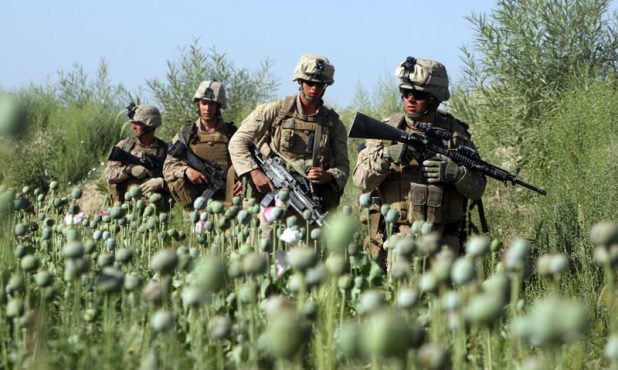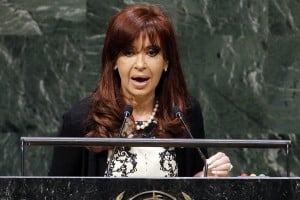Washington’s partial rapprochement with Havana, symbolized by President Barack Obama’s recent visit to Cuba, is more advantageous to the United States than the neighboring country it has ostracized, sanctioned and subverted for over five decades.
This is not to say that the small island nation of 11.3 million people has gained nothing from President Obama’s efforts to mitigate over 56 years of Yankee hostility, beginning overtly a year after the 1959 armed revolution that freed Cuba not only from a vicious dictatorship but 467 years of foreign domination — by Spain from 1492, replaced by the U.S. from 1899. It ended with the Cuban Revolution on New Year’s Day 1959.
Despite Obama’s significant visit to Havana March 21-23, his cordial dialogue with President Raul Castro, and the declaration that “I have come here to bury the last remnant of the Cold War in the Americas,” the principal contradiction between Washington and Havana has not changed substantially: The Cuban revolutionary government is committed to retain a socialist system, including a measure of private enterprise and foreign investment. The U.S. government is committed to eliminating socialism in the Western Hemisphere, though a modification in methodology now will seek to attain that goal with honey, not acid. It will take a more leftist White House and Congress to allow a truly equal and friendly relationship to develop — and that’s not on the present horizon.
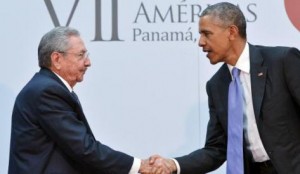 President Castro alluded to U.S. intentions in his opening report to the 7th Communist Party congress April 16 when he noted: ” We are not naive nor do we ignore the aspirations of powerful external forces that are committed to what they call the ’empowerment’ of non-state forms of management, in order to create agents of change in the hope of putting an end to the Revolution and socialism in Cuba by other means.”
President Castro alluded to U.S. intentions in his opening report to the 7th Communist Party congress April 16 when he noted: ” We are not naive nor do we ignore the aspirations of powerful external forces that are committed to what they call the ’empowerment’ of non-state forms of management, in order to create agents of change in the hope of putting an end to the Revolution and socialism in Cuba by other means.”
In this regard, President Obama’s Dec. 17, 2014, announcement of Washington’s new attitude toward Cuba is instructive: “I do not expect the changes I am announcing today to bring about a transformation of Cuban society overnight.” The timing is ambiguous; the transformation to capitalism remains the goal.
Castro continued:
“We are willing to carry out a respectful dialogue and construct a new type of relationship with the United States, one which has never existed between the two countries, because we are convinced that this alone could produce mutual benefits. However, it is imperative to reiterate that no one should assume that to achieve this Cuba must renounce the Revolution’s principles, or make concessions to the detriment of its sovereignty and independence, or forego the defense of its ideals or the exercise of its foreign policy — committed to just causes, the defense of self-determination, and our traditional support to sister countries.”
U.S. press coverage of the party congress — what there was of it — was slanted against socialism in many cases. The New York Times article from Mexico City April 20 is a case in point. It appeared to be entirely based on oppositional points of view. “Despite a dramatic shift in relations with the United States and tentative economic changes,” one paragraph alleged, “the leaders of the Castros’ generation are in no hurry to make room for new blood. It is a blow to younger Cubans who are eager for a more pluralistic system led by people closer to their own ages and unencumbered by socialist orthodoxies.” The article grudgingly mentioned that some younger members “were appointed to senior Communist Party positions.” Associated Press staffers in Havana did a fairly good job of objective reporting.
Carefully charting a future course for a government in transition and the inevitable integration of a younger generation into leadership is the party’s most important responsibility at this time. Those who won the revolution and/or who guided socialist Cuba through extraordinary difficulties imposed over these decades by the depredations of U.S. imperialism and the implosion of the Soviet camp want to get it right. The party will be identifying younger candidates over the next five years who will best implement the medium and long range plans (up to 2030) being worked out during that time. While most of the top posts of the political bureau were unchanged this time, the party selected five younger members in a bid to diversify the leadership.
Raul Castro, who will be 85 in June, assumed the presidency in 2008 when President Fidel Castro resigned due to illness. He will step down in two years. No successor has been named but it is assumed that First Vice President Miguel Díaz-Canel, 57, will become the next president. He graduated college as an electronic engineer and served as Minister of Higher Education from 2009 to 2012. Díaz-Canel was elected to his present post in 2013. Future presidents will serve no more than two five-year terms. Both Raul Castro and Ramon Machado Ventura, 85, were reelected to their posts as first and second secretaries of the party. Raul reported as the congress ended “This Seventh Congress will be the last led by the historic generation.” He also suggested that by the next congress it would be best for leaders becoming 70 to relax and “take care of grandchildren.”
Fidel Castro, who will be 90 Aug. 13, spoke briefly on the last day of the four-day congress attended by 1,000 delegates and 260 guests. Now referred to as “the historic leader of the revolution,” Fidel received an ovation when he said, obviously referring to himself, “everyone will eventually die, but the ideas of Cuban communists will prevail, as proof that on this planet, if you work with fervor and dignity, the material and cultural goods that humans need can be produced, and we must fight relentlessly to obtain them.”
President Obama has relaxed several painful penalties imposed upon Cuba, but many more remain. Washington may in time terminate over a half-century of severe economic sanctions, including an international trade blockade, but it will take an act of congress to do so, and that may not be forthcoming for many more years, or until Cuba publicly shreds the red flag. At this point a large majority of Republicans and a lesser number of Democrats are devoted to retaining sanctions. An encouraging sign in the end-sanctions argument is the fact that very large sectors of U.S. business and agriculture desperately want access to the Cuban market which has been deprived of many goods for decades.
A majority of the American people (58%) not only favor reestablishing diplomatic relations (while just 24% oppose), but 55% favor the United States ending its trade embargo against Cuba. These polls were taken a few months ago before the Obama family received a popular welcome Havana. Interestingly, and largely forgotten, is that the average American was never enthusiastic about Washington’s break in relations with the island. In 1977, for instance, 53% of Americans told Gallup that diplomatic relations with Cuba should be re-established. But Washington’s prolonged Cold War of choice and indulging of the wishes of anti-revolutionary Cubans in Florida always took priority.
Despite Obama’s warm words in Havana U.S. propaganda against the island is continuing. During Obama’s days in Cuba the American mass media — which invariably echoes Washington’s true sentiments regardless of diplomatic camouflage — focused primarily on the misrepresentation that the Cuban government disparages “human rights,” and that hundreds or many more political dissidents have been in prison for years — or “languishing in dungeons across the island,” in the words of Republican Sen. Ted Cruz.
At his joint press conference with President Castro March 21, Obama introduced this theme when he said: “Wherever we go around the world, I made it clear that the United States will continue to speak up on behalf of democracy, including the right of the Cuban people to decide their own future. We’ll speak out on behalf of universal human rights, including freedom of speech, and assembly, and religion.” American presidents have been uttering such hypocrisies for decades as they protect and arm dictatorships and overthrow governments unwilling to serve U.S. interests.
Obama asked for questions from the press and CNN White House correspondent Jim Acosta then addressed Raul Castro: “President Castro, my father is Cuban. He left for the United States when he was young. Do you see a new and democratic direction for your country? And why [do] you have Cuban political prisoners? And why don’t you release them?”
Castro replied: “Give me the list of political prisoners and I will release them immediately.” It does not appear that any list was forthcoming. The government denies that dissidents are being held on political grounds; it says some are there for various violations of Cuban law.
According to the Cuban Commission for Human Rights and National Reconciliation — an independent group opposed to the Havana government —there were 80 political prisoners all told in Cuban jails. The Cuban authorities do arrest people engaging in disruptive or illegal demonstrations — but in virtually all cases they are released in a few hours.
On March 2, three weeks before Obama’s visit, Deputy Secretary of State, Antony J. Blinken issued a U.S. statement to the UN Human Rights Council that included a condemnation of Cuba. It said in part: “In Cuba, we are increasingly concerned about the government’s use of short-term detentions of peaceful activists, which reached record numbers in January. We call on the Cuban government to stop this tactic as a means of quelling peaceful protest.”
Last week, police in Washington arrested 1,200 people who were nonviolently demonstrating and offering civil disobedience for good causes and no big deal was made of it by the American press. During Obama’s stay in Havana a couple of dozen people were arrested for civil disobedience (and released within hours) and the U.S. press went wild with charges of violating human rights.
There are many situations where negative U.S. policies and actions against Cuba continue, but only one more will be noted for now — the Cuban Adjustment Act. Cuba is a relatively poor country, hardly least because of U.S. sanctions. Washington is continuing its long practice of inducing Cubans to migrate to nearby Florida, legally or illegally, in order to convey to the world the impression they are fleeing their homeland for freedom. It’s an old Cold War trick. According to an Oct. 1, 2015, article in Florida’s Sun-Sentinel daily paper:
Unlike other immigrants, Cubans are granted entry to the United States just by reaching land. The Cuban Adjustment Act of 1966 enables them to become permanent legal residents a year after they arrive, far faster than any other nationality…. Cuban immigrants are granted immediate access to welfare, food stamps and Medicaid, a practice that has ballooned from a $1 million federal allocation in 1960 to at least $680 million a year today.” Many Cubans have migrated since President Obama announced he sought better relations in December 2014, fearing the program would be discontinued. In this the U.S. profits from the Cuban brain drain by offering good salaries to economically struggling doctors, top athletes, college graduates and many other talented people who were educated and trained at state expense in Cuba.
Telesur, the leftist Venezuelan news outlet summed up Obama’s trip with these words:
It was a victory for an unyielding Cuba, whose people and leaders never surrendered in the face of a decades-long, U.S. onslaught. It marks the first time in 88 years that a U.S. president has touched Cuban soil. It’s an admission by the Obama administration that U.S. policy toward Cuba has failed. Yet in spite of all this, some raw wounds in diplomatic relations were not addressed.
Cuba insists that before there is a normalization of relations between the two countries, the U.S. must end its blockade; return the illegally-held Guantanamo Bay; change its immigration policies toward Cuban migrants; stop transmitting radio propaganda into the country and attempting to build an opposition; and finally stop all attempts at regime change. The U.S. president failed to change policy over the illegal blockade, or apologize for the crippling financial damage it has caused over more than half a decade.
Just last month, Obama renewed a 20-year-old state of national emergency to continue to administer the blockade against the Caribbean island…. It bans ships and planes from the U.S. from entering Cuban waters or airspace without government permission, and requires the president to annually renew these emergency powers.
According to the UN the blockade has cost Cuba more than US$117 billion (a huge sum for this small country), deprived Cubans of life-saving medicines, and caused extra hardships for millions of Cubans. If this isn’t a massive attack on human rights what is?
The U.S will benefit more quickly and profoundly than Cuba due to its new relationship, particularly in world “leadership” — Obama’s code word for global hegemony. There are three connected aspects to this observation:
1. The nations of the world are strongly opposed to Washington’s bullying, sanctions and other expressions of antagonism toward a much smaller country that has done it no harm. Last October, for the 24th year in a row, the UN General Assembly voted overwhelmingly to denounce the U.S. economic, commercial and financial blockade. The vote was 191 to 2 (U.S. and Israel). By indicating he wanted to “normalize” relations, Obama sought to rid Washington of the repeated embarrassment of global condemnation. The vote probably will continue until Congress scraps all its repressive sanctions but Obama’s gesture will alleviate the pressure.
2. For over 100 years the U.S. essentially dominated Latin American and Caribbean nations and top hemisphere inter-regional organizations. This began to change dramatically less than 20 years ago as key governments in the region moved left and more distant from the Yankee overlord. Although it was a founding member of the Organization of American States (OAS), Cuba was banned by the U.S. from attending meetings of this important group for 47 years but was invited to return by a majority vote of all the countries in 2009. Havana’s response was that while Cuba welcomed the Assembly’s gesture, in light of the Organization’s historical record “Cuba will not return to the OAS.” Cuba was also banned from the first six meetings of the Washington-backed Summit of the Americas, but strong support from Latin America and Caribbean countries made it possible for Raul Castro to attend in 2015.
Since then, the Community of Latin American and Caribbean States (CELAC) was formally established in 2011 in Caracas, with the initiative of the late Venezuelan President Hugo Chávez and the support of Cuba. CELAC includes all 33 countries of Latin America and the Caribbean, including Cuba, and excludes the United States and Canada. Its task is to encourage deeper integration of the countries in the region. Other important new groups that reduce Yankee control are ALBA (an alternative to the Free Trade Area of the Americas) and UNASUR (the Union of South American Nations).
The Obama administration has long been aware that the U.S. was losing much of its clout in a crucial region of 640 million people and that the best way to restore some semblance of authority was to publicly declare that Washington would scrap the Cold War with Cuba. In December 2014 Obama announced: “We will end an outdated approach [to Cuba] that, for decades has failed to advance our interests, and instead we will begin to normalize relations between our two countries.” This 55-year policy not only intentionally crippled the economy of a small nation; it was major factor in the loss of U.S. influence in the region. Obama now is working toward regaining its dominant “leadership” south of the border.
In an article for the April 2016 issue of The Atlantic magazine, based on various interviews with Obama, Jeffrey Goldberg writes that Obama “cited America’s increased influence in Latin America — increased, in part, he said, by his removal of a region-wide stumbling block when he reestablished ties with Cuba — as proof that his deliberate, nonthreatening, diplomacy-centered approach to foreign relations is working.”
Other factors are involved, of course. Many of these left governments are suddenly in economic or political trouble. Raul pointed out in his report to the party congress: “Latin America and the Caribbean find themselves experiencing the effects of a strong, articulated counteroffensive, on the part of imperialism and oligarchies, against revolutionary and progressive governments, in a difficult context marked by the deceleration of the economy, which has negatively impacted the continuity of policies directed toward development and social inclusion, and the conquests won by popular sectors…. This policy is principally directed toward the sister Bolivarian Republic of Venezuela, and has been intensified in recent months in Bolivia, Ecuador, and Brazil, as well as Nicaragua and El Salvador. Recent setbacks for governments of the left in the hemisphere are being used to announce the end of a progressive historical cycle, opening the way for the return of neoliberalism and demoralization of political forces and parties, social movements and working classes, which we must confront with more unity and increased articulation of revolutionary action.”
3. The purpose of better relations with Cuba is geopolitical. First it is to further weaken left regimes in the region (including Cuba) and reverse the erosion of U.S. “leadership” in the Western Hemisphere. Obama feared that further withering away of Washington control in Latin America/Caribbean would negatively impact Washington’s strategic global hegemony. Strengthening U.S. world supremacy is the most important element of Obama administration foreign/military policy, the highest priority of which is to contain China’s influence in Asia and the world and to isolate Russia. The improvement of U.S. relations with Iran and Myanmar as well as Cuba is part of this project, as are the Trans-Pacific Partnership, the proposed Transatlantic Trade and Investment Partnership pact with Europe, and the ongoing Pentagon military buildup in proximity to China and Russia.
The Cuban people welcomed Obama’s stay in Havana because it indicated the Yankee Colossus was reducing its continuous punishment of their country for being socialist and not willing to follow where Washington leads. His speech to the Cuban nation March 22 was very carefully composed. “I have come here to extend the hand of friendship to the Cuban people,” he said, artfully avoiding extending it to the Cuban government.
He went on:
“Having removed the shadow of history from our relationship, I must speak honestly about the things that I believe, the things that we as Americans believe. I can’t force you to agree, but you should know what I think. It’s time to lift the embargo, but even if we lifted the embargo tomorrow, Cubans would not realize their potential without continued change here in Cuba.”
The notion that it is possible for a superpower, after inflicting decades of castigation and pain on a small nation, to remove the “shadow of history” with a few soothing words and a false smile is insulting and absurd. Many Cubans were happy to hear him say, “It’s time to lift the embargo,” aside from the reality that it’s not going to be lifted for many years. But if it ever is ended, Obama warned the Cuban people that they won’t realize that potential unless they reorganize their society in a way that satisfies Uncle Sam.
In all Obama’s many pronouncements in Cuba about U.S. dedication to human rights he never mentioned Washington’s intrusions on human rights in Latin America and the Caribbean during the last 60-plus years. They include backing the fascist dictatorships in Argentina and Brazil, and supporting violent regime change in Chile against democratically elected President Salvador Allende. In addition there were U.S. intrusions, invasions, CIA changes in regime, and other American abuses in Guatemala, Costa Rica, Haiti, Guyana, Ecuador, Honduras, Bolivia, Jamaica, Dominican Republic, Uruguay, Nicaragua, Grenada, Suriname, Panama, Peru, Mexico, Colombia, Venezuela and of course the CIA-organized and President Kennedy-approved disastrous invasion of Cuba April 17, 1961. The CIA and Cubans the agency controlled carried out up to 100 failed assassination attempts on the life of President Fidel Castro.
Obama removed Cuba from its list of state of sponsors of terrorism in May. This opened the way toward closer relations. But Cuba never supported terrorism. It defended itself against U.S. terrorism many times. Havana opposed fascist dictatorships in Latin America. It supported those fighting for freedom. Cuba sent its troops to fight and die against the U.S.-backed South Africa’s war against Angola.
Here is an excerpt from a longer accounting of U.S. crimes against Cuba compiled by Salim Lamrani a decade ago. He lectures at the Paris Sorbonne, and has written several books about Cuba (in French).
U.S. official documents that have recently been declassified show that, between October 1960 and April 1961, the CIA smuggled 75 tons of explosives into Cuba during 30 clandestine air operations, and infiltrated 45 tons of weapons and explosives during 31 sea incursions. Also during that short seven-month time span, the CIA carried out 110 attacks with dynamite, planted 200 bombs, derailed six trains and burned 150 factories and 800 plantations.
Between 1959 and 1997, the United States carried out 5,780 terrorist actions against Cuba – 804 of them considered as terrorist attacks of significant magnitude, including 78 bombings against the civil population that caused thousands of victims.
Terrorist attacks against Cuba have cost 3,478 lives and have left 2,099 people permanently disabled. Between 1959 and 2003, there were 61 hijackings of planes or boats. Between 1961 and 1996, there were 58 attacks from the sea against 67 economic targets and the population.
The CIA has directed and supported over 4,000 individuals in 299 paramilitary groups. They are responsible for 549 murders and thousands of people wounded.
In 1971, after a biological attack, half a million pigs had to be killed to prevent the spreading of swine fever. In 1981, the introduction of dengue fever caused 344,203 victims killing 158 of whom 101 were children. On July 6, 1982, 11,400 cases were registered in one day alone.
Most of these aggressions were prepared in Florida by the CIA-trained and financed extreme right wing elements of Cuban origin.
Any major Cuban economic gains resulting from less antagonism by the U.S. will take some time to materialize, argued Stratfor March 15:
The majority of U.S. businesses cannot trade with Cuba because of the embargo, which is held in place by several pieces of legislation. The embargo’s future will depend on the political mood in the United States. Both houses of the U.S. Congress — currently controlled by the Republican opposition — would have to pass legislation undoing provisions of the previous acts to end it. This is unlikely to happen during the remainder of the Obama administration, which will not be able to find the consensus needed to pass controversial legislation during an election year.
So the task of normalizing economic relations with Cuba will fall to the next U.S. president, and it will take several additional rounds of negotiations before the subject of lifting the embargo even comes up for serious discussion. The United States and Cuba have yet to settle major outstanding issues, such as compensation to U.S. property owners for assets seized after the 1959 revolution. The Cuban government also does not even minimally meet any of the human rights stipulations laid out in the Cuban Liberty and Democratic Solidarity Act of 1996 for lifting the embargo. Though new legislation could potentially supersede these requirements, it is plausible that lawmakers concerned about Havana’s treatment of dissidents could use the topic to stall discussions. Until the embargo is lifted, it is likely that if the U.S. government wants to boost trade and financial transactions between specific U.S. business sectors and Cuba, it will have to loosen existing federal restrictions through the U.S. Department of the Treasury.
The White House has already taken some steps in this regard a week before the visit to Cuba, according to the March 15 Wall Street Journal: “The Obama administration unveiled some of the most extensive changes in decades to rules on U.S.-Cuba trade, financial transactions and travel, including a provision that effectively lifts the long-standing ban on American tourists visiting the country.
“The new measures, presented March 14, ease restrictions on American financial institutions and significantly broaden Cuba’s access to the global economy. They allow Cuban citizens to earn salaries from U.S. companies and to have American bank accounts for limited purposes, as well as permit the use of U.S. dollars in financial transactions with Cuba.”
The White House then voided remaining limits on individual travel to Cuba, which will be a boon for the tourist industry.
An article in the April 5 Foreign Affairs online, written from Cuba by Anne Nelson and Debi Spindelman, made some useful observations about Cuba that should be considered by U.S. business leaders who plan to get richer in Cuba:
With the opening (of the new relationship), there promises to be a headlong rush to find, or construct, a Cuba that resembles the United States. But that should not come at the expense of the other Cuba, mysterious and complex, that’s well worth exploring. To start with, there’s Cuba’s often overlooked success in indicators of human development. The World Bank reported that in 2013, Cuba’s life expectancy, at roughly 79 years, exceeded that of the United States for the first time. [Infant mortality per thousand live births in Cuba is 4.2. In the U.S. it is 6 per thousand.] The Cubans are proud of their security, a product of banning guns and severely limiting narcotics trafficking and drug abuse. The country’s system of preventive medicine has been highly effective. Every week, teams of medical students make weekly door-to-door check-ups, effectively curtailing many infectious diseases across the island. In recent weeks Cuba has mobilized its army reserves to fumigate every household in the country to limit the spread of the Zika virus….
Cubans in both Havana and the rural interior… [are] aware of the advantages they stand to lose in a transition: cities in which drugs are rare and gun violence is unknown, a society that is committed to nourishing and educating all of its children. Cubans are asking how to integrate the most constructive aspects of the U.S. system without inviting its attendant plagues. For its part, the United States, as well as U.S. entrepreneurs seeking to set up shop on the island, should approach Cuba in a spirit of discovery, with much to offer, much to gain, and much to learn.
Rafael Hernandez, Cuban political analyst and head of the Temas magazine told China’s Xinhua news agency: “We are not rushing towards a free market economy, nor is our government taking us there. This is a gradual process of transformation, economic diversification and development of a nationalist private sector.”
According to Xinhua: “Havana must reduce its dependence on imports and develop a greater capacity to produce goods. Hernandez said ‘The Cuban people have very high expectations and demands from this reform era because their hope is to restore the quality of life they had in the 1980s just before the Soviet collapse.’
He also stressed the next several years will be essential for Cuba to speed up reforms initiated in 2011 and that the Cuban leadership is aware of the importance of implementing key reforms such as putting an end to the country’s double currency system, increasing productivity, efficiency and salaries in the state sector and providing a legal framework for private businesses.
Hernandez further said, ‘At the same time, the party leadership wants to avoid any chaotic shake-up within its ranks as economic reforms are implemented and the revolutionary leaders hand over power to the younger generation. In the next five years we’ll see an articulated, gradual and easy-going generational transition among the top political positions in the country.’
President Obama indicated he would like to visit Fidel if it could be worked out, but it didn’t happen. Fidel has had weak health for several year but he often meets with visitors and writes a frequent column for the daily paper Granma. He went to a children’s school and talked to some of the young kids two weeks after Obama’s departure. And just days after Obama and his family arrived back home Fidel published a 1,500-word column titled “Brother Obama.” which said in part:
Obama made a speech in which he uses the most sweetened words to express: ‘It is time, now, to forget the past, leave the past behind, let us look to the future together, a future of hope. And it won’t be easy, there will be challenges and we must give it time; but my stay here gives me more hope in what we can do together as friends, as family, as neighbors, together.’
I suppose all of us were at risk of a heart attack upon hearing these words from the President of the United States. After a ruthless blockade that has lasted almost 60 years, and what about those who have died in the mercenary attacks on Cuban ships and ports, an airliner full of passengers blown up in midair, mercenary invasions, multiple acts of violence and coercion?
Nobody should be under the illusion that the people of this dignified and selfless country will renounce the glory, the rights, or the spiritual wealth they have gained with the development of education, science and culture.
I also warn that we are capable of producing the food and material riches we need with the efforts and intelligence of our people. We do not need the empire to give us anything. Our efforts will be legal and peaceful, as this is our commitment to peace and fraternity among all human beings who live on this planet.










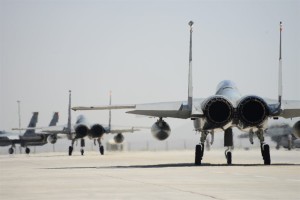
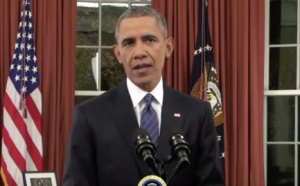

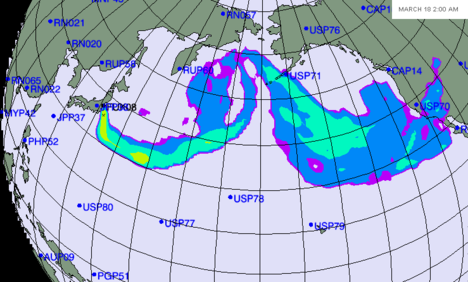
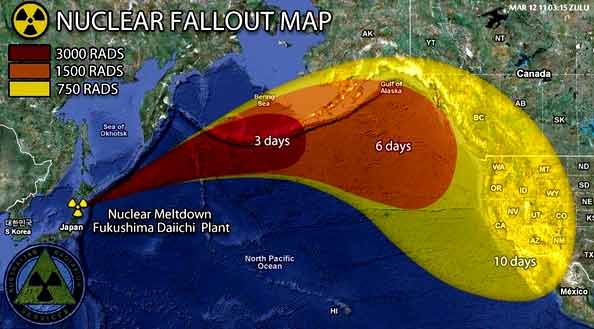








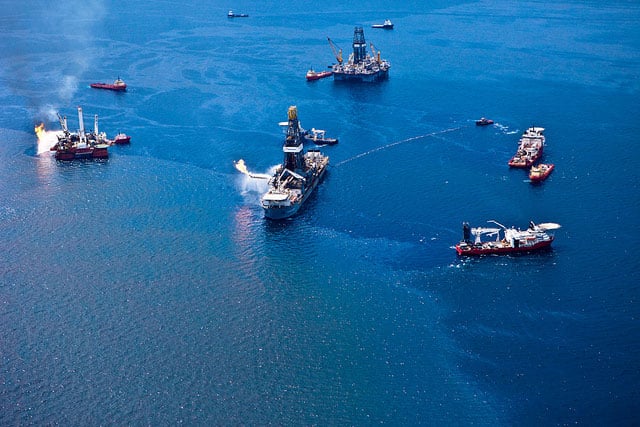





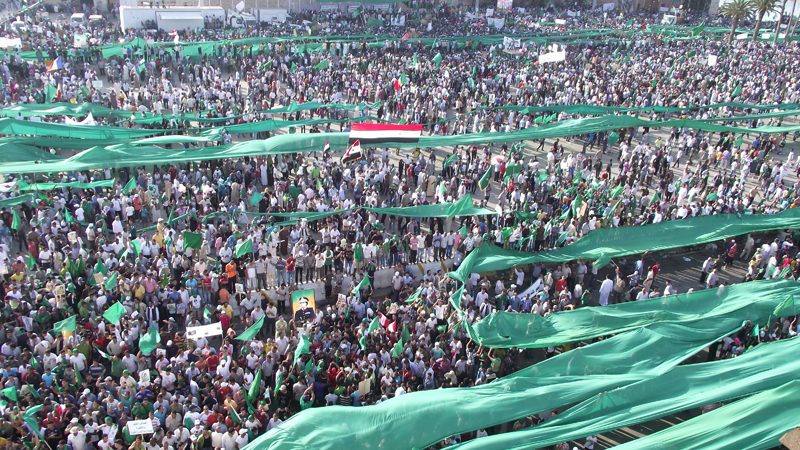

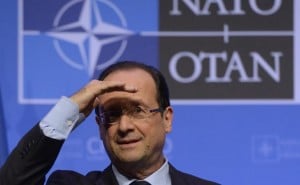
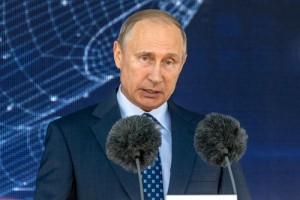





 I
I







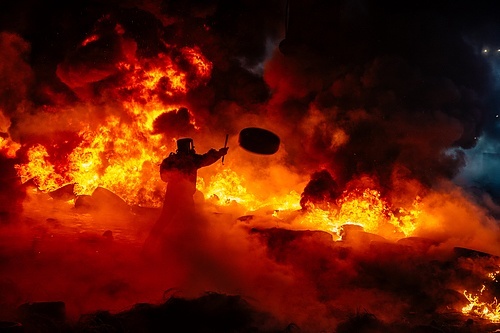
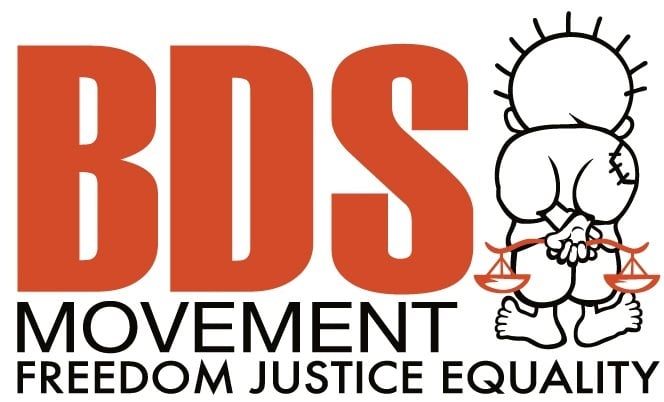
 The Washington-based, USAID-funded “
The Washington-based, USAID-funded “